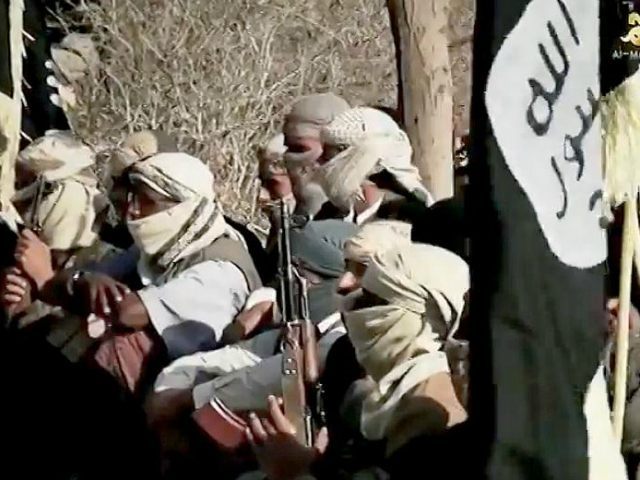The U.S. military and their Afghan counterparts have decimated high-ranking jihadi leaders in Afghanistan in recent weeks, including the commander of the Taliban’s deadly “Red Unit” and the second-in-command of the al-Qaeda in the Indian Subcontinent (AQIS) faction.
Referring to the death of the Taliban special forces “Red Unit” chief, American Gen. John Nicholson, the top commander of U.S. and NATO troops in Afghanistan, said in a statement:
Mullah Shah Wali’s death will disrupt the Taliban network, degrade their narcotics trafficking, and hinder their ability to conduct attacks against Afghan forces. USFOR-A [U.S. Forces-Afghanistan] and our Afghan partners will continue to aggressively target Taliban leaders to destroy their drug network, disrupt their communications, and deny them safe haven.
The operations that killed the Taliban and al-Qaeda leaders along with other jihadists “are proof our strategy is working,” added Nicholson, alluding to U.S. President Donald Trump’s South Asia strategy.
“Afghan forces and USFOR-A can confirm the deaths of two top terrorist leaders in Afghanistan: Omar Khetab, 2nd in command of al-Qaeda in the Indian Subcontinent, and Mullah Shah Wali, aka Haji Nasir, leader of the Taliban ‘Red Unit’ in Helmand,” noted the American troops on Twitter.
A video attached to the Twitter post shows the U.S. airstrike on December 1 that wiped out the “Red Unit” commander in the Taliban stronghold of Helmand province along with one of his deputy commanders and three other terrorists.
Afghan forces and USFOR-A can confirm the deaths of two top terrorist leaders in Afghanistan: Omar Khetab, 2nd in command of al-Qaeda in the Indian Subcontinent, and Mullah Shah Wali, aka Haji Nasir, leader of the Taliban “Red Unit” in Helmand. #ForAFGhttps://t.co/VUbMKFhL2X pic.twitter.com/IJWTZUJpbJ
— USFOR-A Spokesman, Col Dave Butler (@USFOR_A) December 5, 2017
The Taliban controls most of Helmand, the top-poppy producing province in Afghanistan, the world’s number one supplier of opium and its heroin derivative.
Taliban jihadists generate most of their funding from the illicit opium trade, recently described by Nicholson as the “economic engine” fueling the “narco-insurgency” against the U.S. troops and their allies.
As part of his strategy, President Trump authorized Nicholson to target the Taliban’s opium fields, marking a significant departure from previous administrations.
At the end of November, the U.S. commander stressed that the Taliban and al-Qaeda still maintain a “close relationship” in Afghanistan more than 16-years after American forces invaded the country to obliterate both groups.
Operations in Afghanistan’s Ghazni, Paktia, and Zabul provinces led to U.S.-backed Afghan Special Security Forces killing Khetab, the second-in-command of the Afghanistan-Pakistan-based AQIS wing of al-Qaeda, and multiple other members of the terrorist group on December 4.
Referring to the AQIS leader, the U.S.-NATO mission in Afghanistan notes:
He was directly involved in fighting against the Afghan government and foreign troops and had a role in advising in the use of heavy weapons such as rockets, mortars, and training for Taliban night attacks.
…
Both [al-Qaeda and Taliban] leaders are responsible for the deaths of many innocent Afghans, and their removal will both disrupt the terrorist operations of their respective organizations and improve overall security of the country.
Gen. Nicholson praised the Afghan National Defense and Security Forces’ (ANDSF) contribution to the successful offensive against AQIS.
“This operation is a testament to the real growth the Afghan forces have achieved over the past year,” proclaimed the general in his statement. “It is also another example of the lethality of the undefeated Afghan Special Forces and the success of working side by side with our Afghan partners.”
Although the ANDSF as a whole continues to suffer from capability lapses, the record number of casualties they have incurred are a testament to their willingness to fight.
The ANDSF includes both military and police units.
Gen. Nicholson noted that al-Qaeda continues to operate in Afghanistan courtesy of the “friendly environment created by the Taliban” that benefits both groups.
AQIS jihadists “tend to provide some of the expertise, the training on specialized weapons or IEDs [improvised explosive devices] or bomb-making,” to the Taliban, said Nicholson, adding, “It’s al-Qaeda Indian Subcontinent fighters who are the ones who are training a lot of the local Taliban, and in return for this the Taliban afford them sanctuary.”

COMMENTS
Please let us know if you're having issues with commenting.